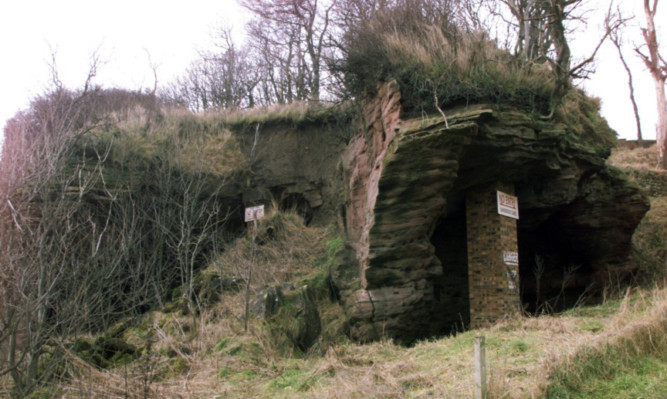Ancient caves in danger of being lost to the sea could become a major tourist attraction if they can be saved.
That is the belief of Kirkcaldy MSP David Torrance, who will call on the Scottish Government to recognise the ongoing work to preserve the historically significant landmarks.
The Wemyss Caves at East Wemyss date back to Pictish times and contain several important carvings from between the fifth and ninth centuries.
In fact, it is thought there are more ancient drawings there than anywhere else in Scotland. A complex of seven natural caves, it is believed they were occupied by Christian hermits during the 11th century.
However, they have been hit by coastal erosion and vandalism in recent years and there are real fears they could be lost for good, unless urgent action is taken.
Mr Torrance, who has the support of several SNP colleagues, has set up meetings with Historic Scotland and Fife Council to discuss the way forward.
He told The Courier: “In the longer term, we are looking to set up a social enterprise to create employment in the area and market the Wemyss Caves as a major tourist attraction.
“Historic Scotland are already on board and I’m trying to highlight to the Scottish Goverment the need for action. The Wemyss caves are of real historical value and are one of the jewels in the crown of Scottish history.
“They have been utilised for a variety of purposes through the centuries and further study of the symbols and carvings etched upon the walls could potentially progress our understanding of Scottish cultural history.
“I am pushing the Scottish Government on this issue.”
The MSP’s attempts have been welcomed by members of the Save the Wemyss Ancient Caves Society (SWACS), which has campaigned for the promotion and protection of the caves for more than 25 years.
Holding back the power of the sea, however, could be a difficult prospect, with one expert describing it as a “wholly unwinnable battle”.
Vast sums of money have been spent putting in rock armour to try to reduce the process of coastal erosion and it is believed several millions more would need to be spent to protect the caves.
To that end, Fife Council and others have been trying to record what is within them in the belief that trying to preserve it does not represent best value.
A source added that the caves were unstable and that it would be “foolhardy” to open them as a tourist attraction. That view is not shared by Mr Torrance and SWACS, who are convinced that, with the right support, the caves can be saved.
SWACS holds open Sundays, during which guided tours are made of the caves.
Secretary Paul McFarlane said: “With the support of our local political representatives and national heritage bodies, it’s hoped we can once and for all secure this important heritage for future generations.”
Meanwhile, the Scottish Coastal Archaeology and the Problems of Erosion Trust (SCAPE), an organisation committed to the research and promotion of Scotland’s coast, is planning to digitally preserve the interior of the caves.
SCAPE officer Joanna Hambly believes the project will create a digital resource that will bring the caves and the carvings to both local and global audiences.
